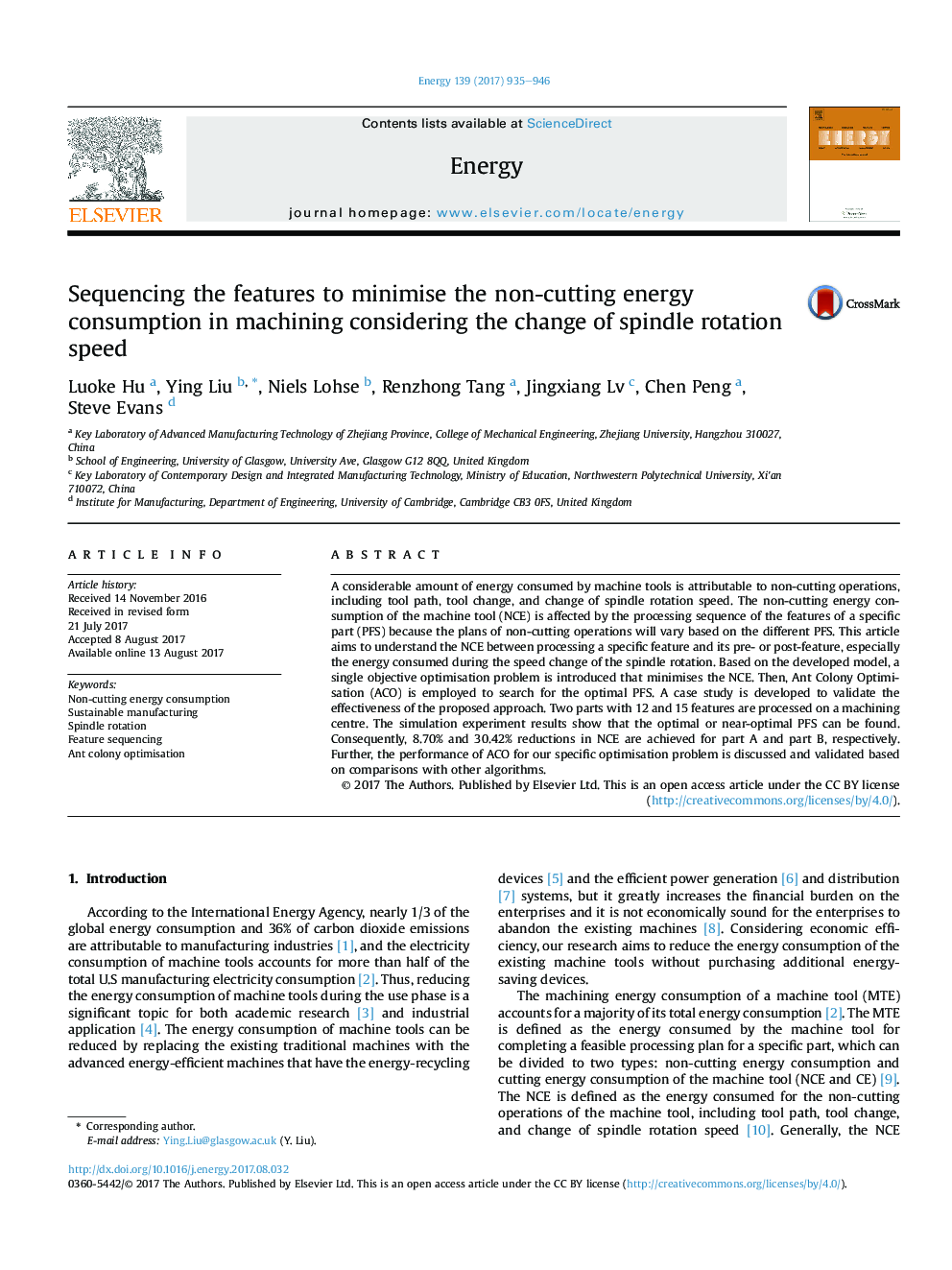| Article ID | Journal | Published Year | Pages | File Type |
|---|---|---|---|---|
| 5475648 | Energy | 2017 | 12 Pages |
â¢Non-cutting energy consumption is reduced by adjusting the processing sequence.â¢Power of machine tool during spindle acceleration and deceleration is analysed.â¢Energy consumed for the change of spindle rotation speed is modelled.â¢The optimal processing sequence is obtained by Ant Colony Optimisation.â¢The developed sequencing approach is demonstrated, compared and discussed.
A considerable amount of energy consumed by machine tools is attributable to non-cutting operations, including tool path, tool change, and change of spindle rotation speed. The non-cutting energy consumption of the machine tool (NCE) is affected by the processing sequence of the features of a specific part (PFS) because the plans of non-cutting operations will vary based on the different PFS. This article aims to understand the NCE between processing a specific feature and its pre- or post-feature, especially the energy consumed during the speed change of the spindle rotation. Based on the developed model, a single objective optimisation problem is introduced that minimises the NCE. Then, Ant Colony Optimisation (ACO) is employed to search for the optimal PFS. A case study is developed to validate the effectiveness of the proposed approach. Two parts with 12 and 15 features are processed on a machining centre. The simulation experiment results show that the optimal or near-optimal PFS can be found. Consequently, 8.70% and 30.42% reductions in NCE are achieved for part A and part B, respectively. Further, the performance of ACO for our specific optimisation problem is discussed and validated based on comparisons with other algorithms.
